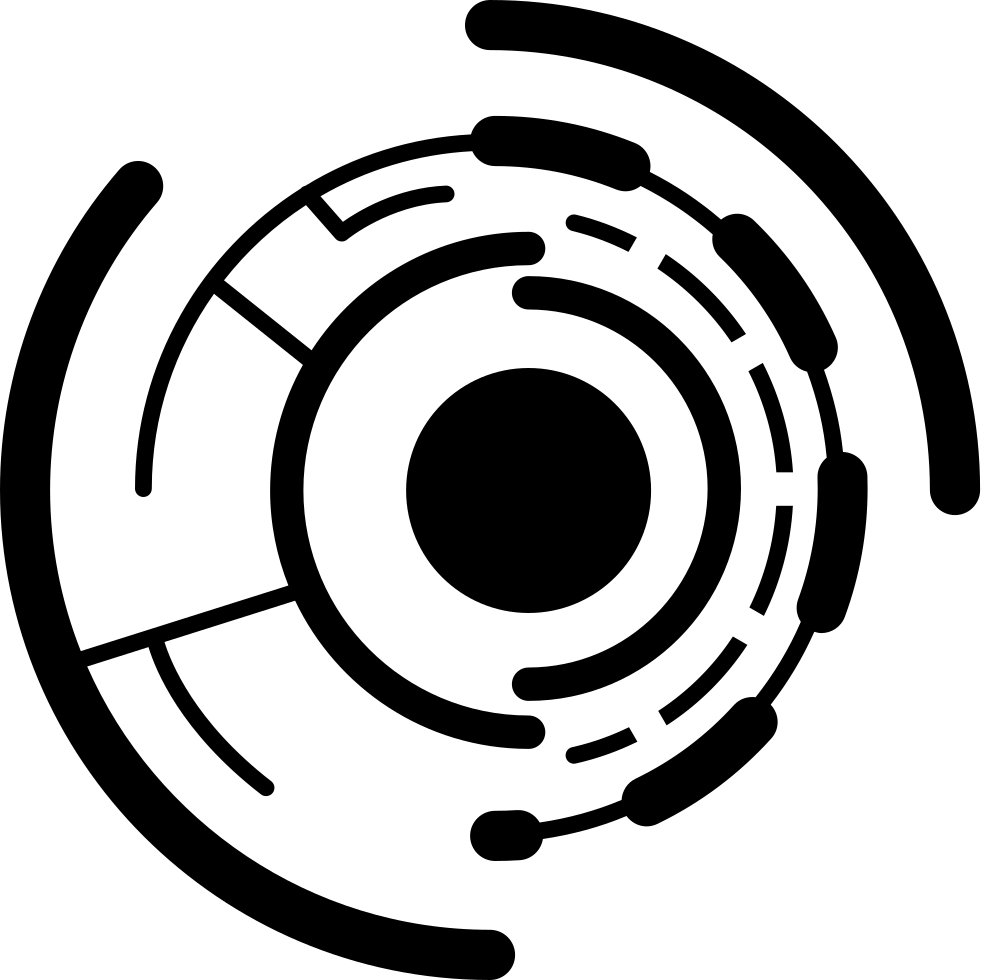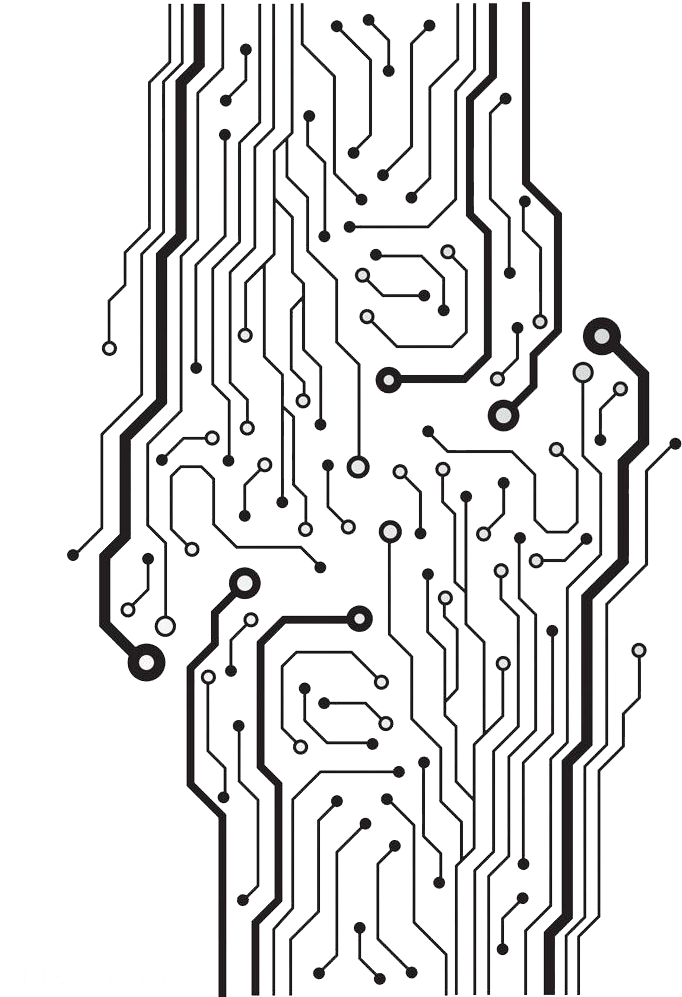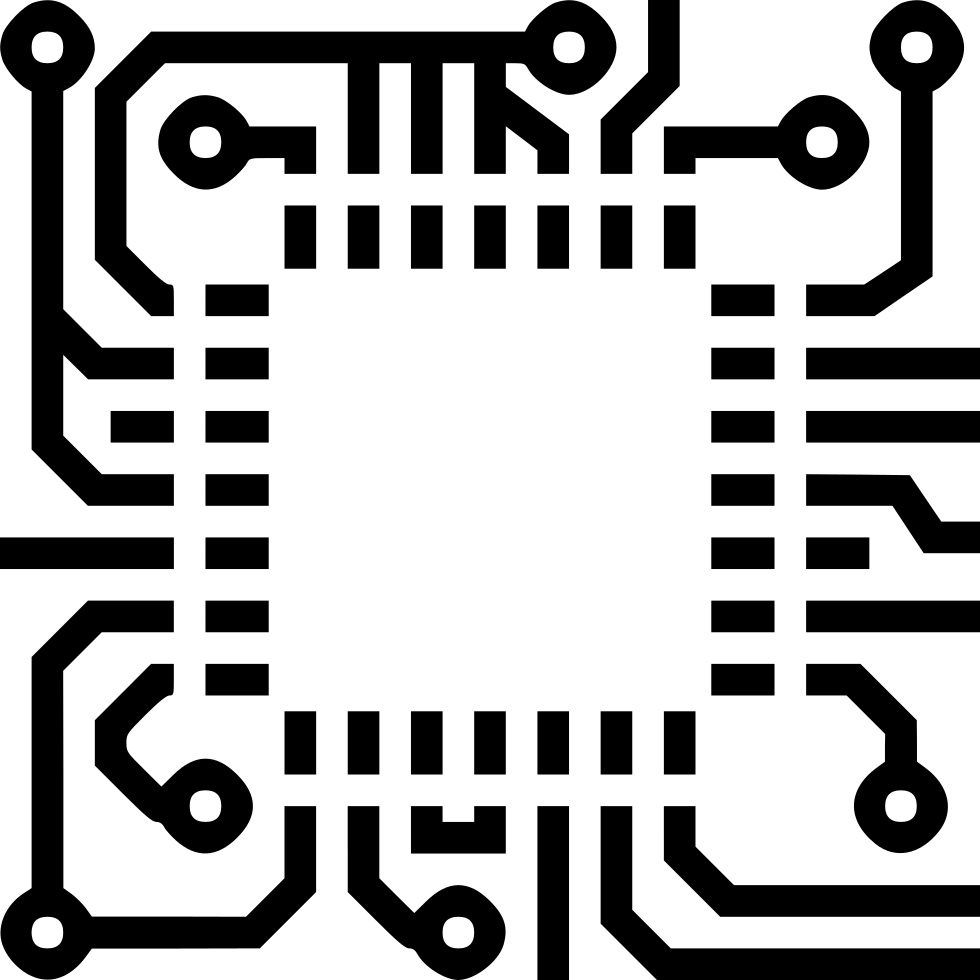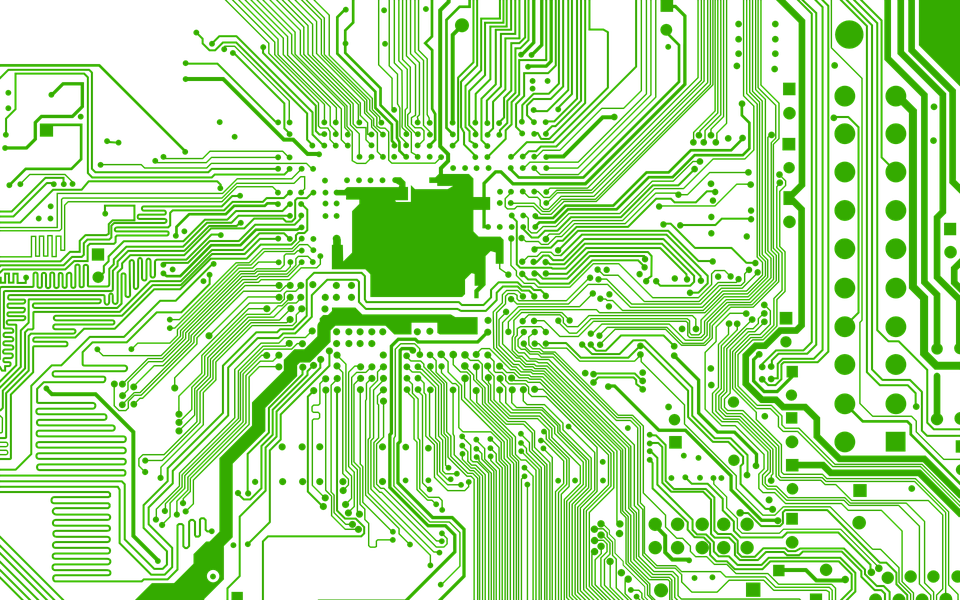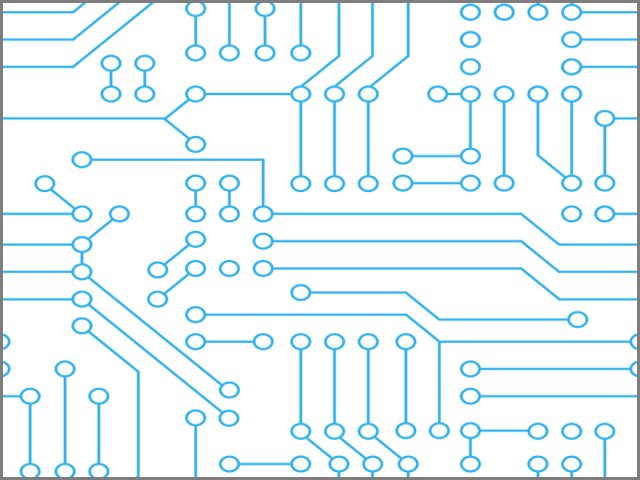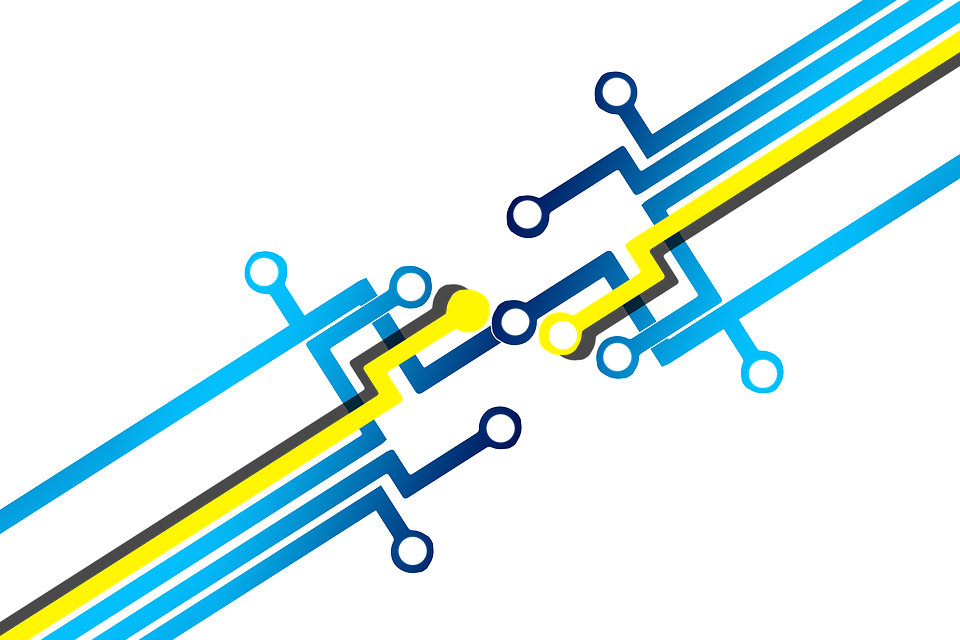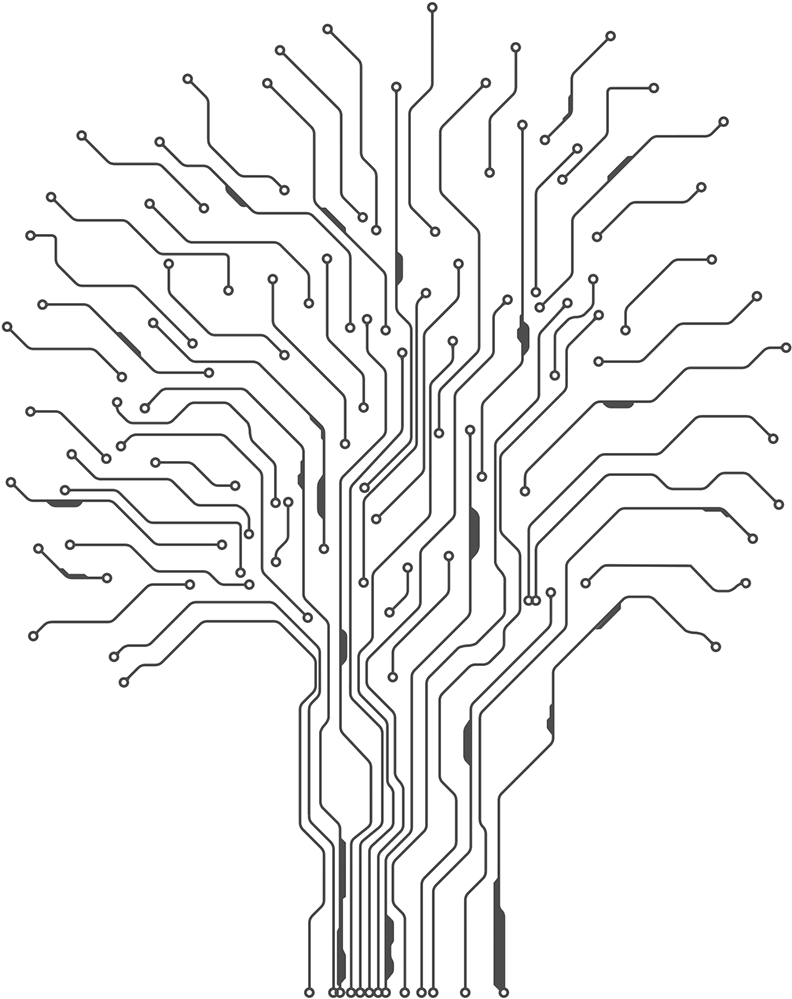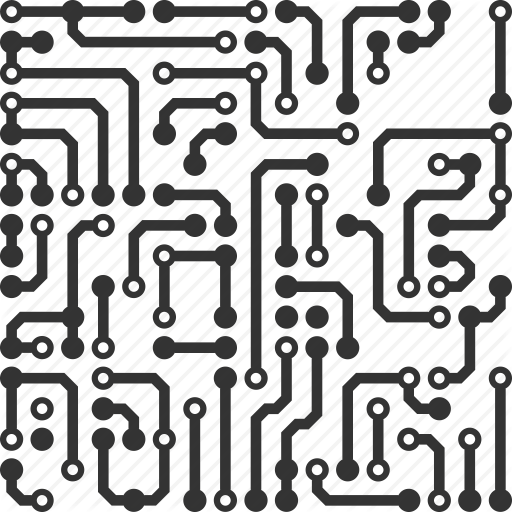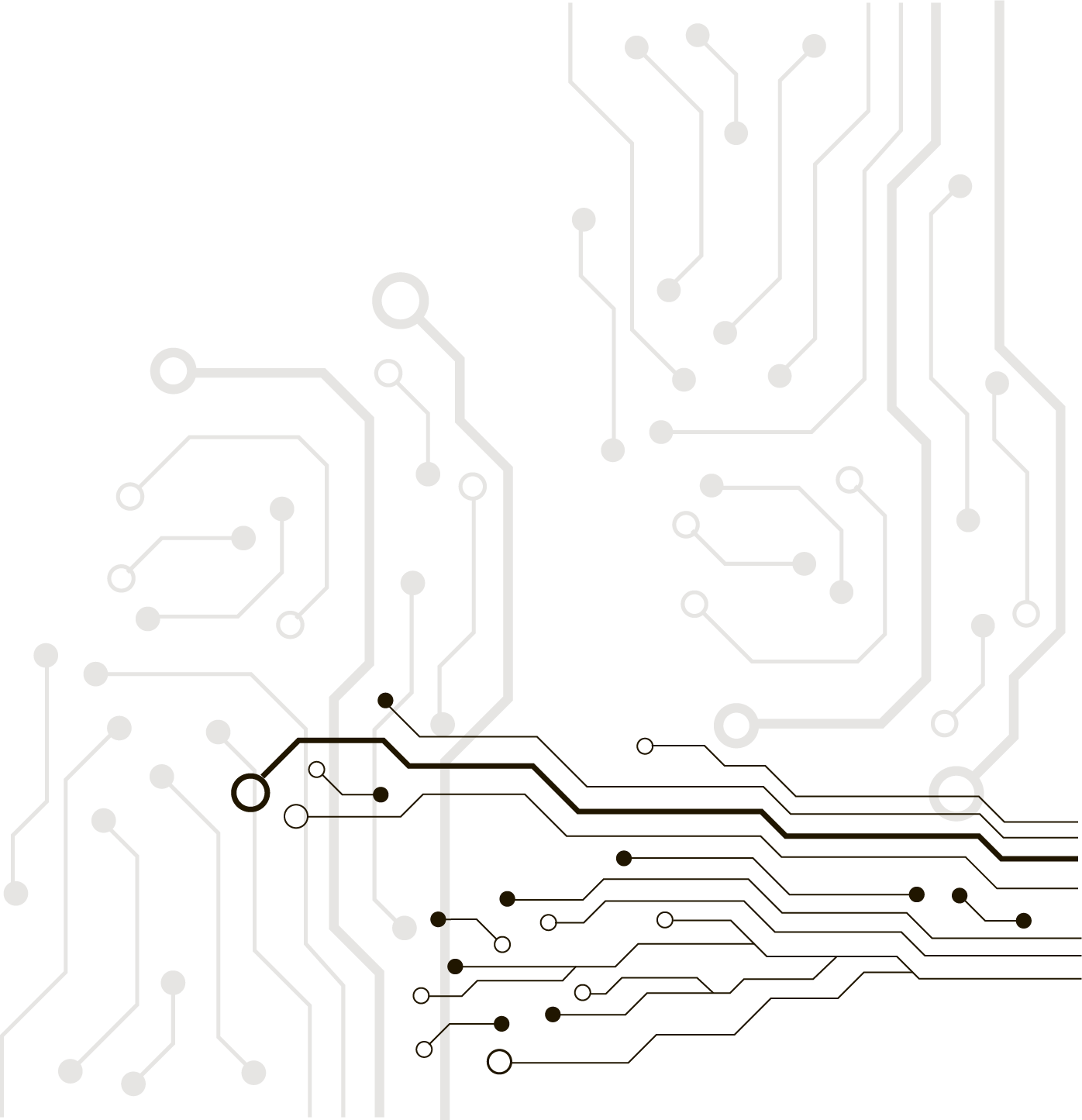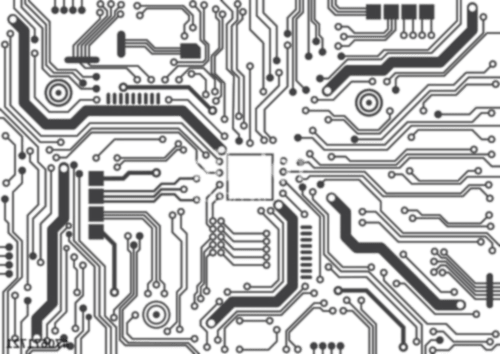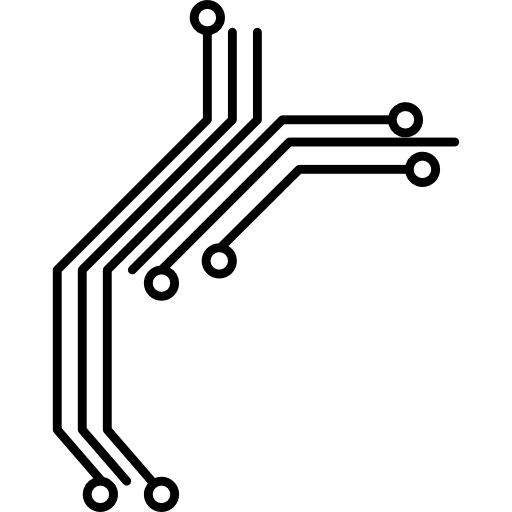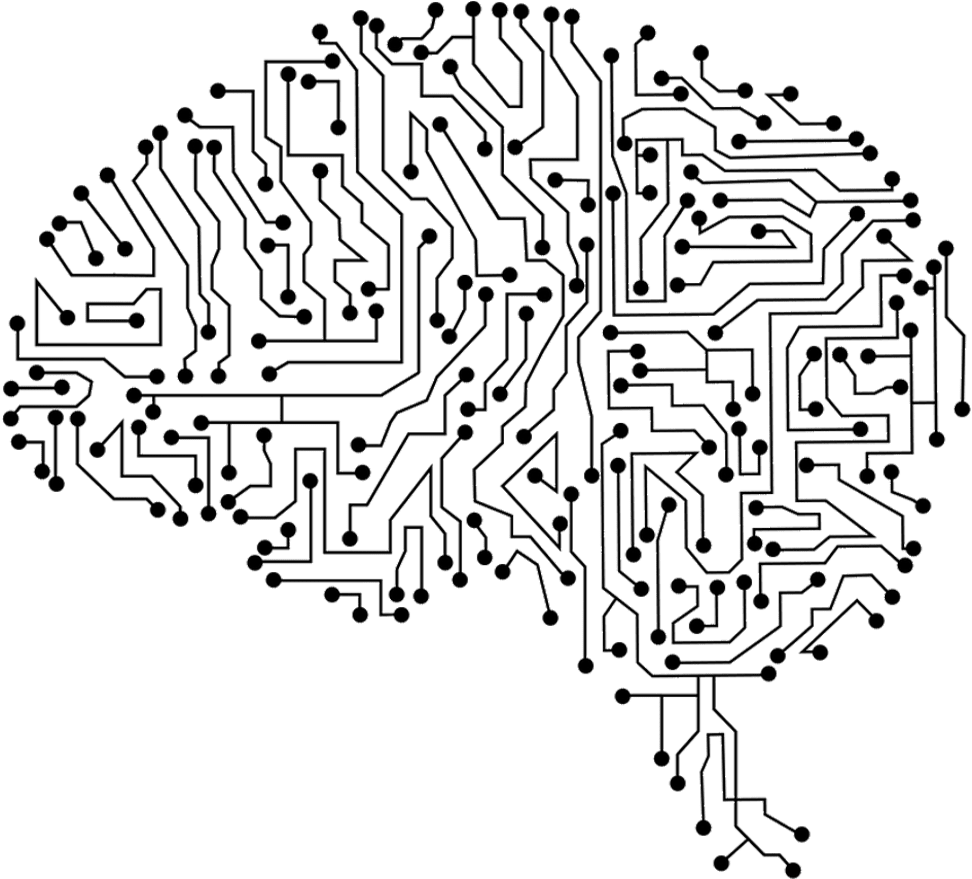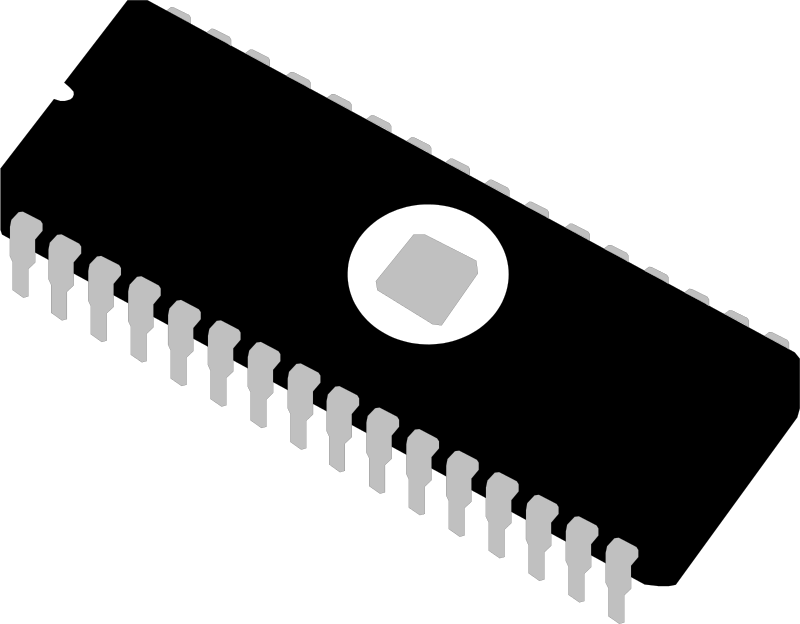Download top and best high-quality free Circuit PNG Transparent Images backgrounds available in various sizes. To view the full PNG size resolution click on any of the below image thumbnail.
License Info: Creative Commons 4.0 BY-NC
An electrical network is a system that connects electrical components (such as batteries, resistors, inductors, capacitors, switches, and transistors) or a model of such a system (e.g., voltage sources, current sources, resistances, inductances, capacitances). An electrical circuit is a network with a closed loop that provides a current return path. Signals are linearly superimposable in linear electrical networks, which are made up entirely of sources (voltage or current), linear lumped elements (resistors, capacitors, inductors), and linear distributed elements (transmission lines). They can be more easily studied utilizing sophisticated frequency domain techniques like Laplace transforms to identify DC, AC, and transient responses.
A resistive circuit is one in which all components are resistors with perfect current and voltage sources. The analysis of resistive circuits is less difficult than that of capacitor and inductor circuits. The outcome is a DC circuit if the sources are constant (DC) sources. Graph measurements and geometrical features may be used to describe the effective resistance and current distribution properties of arbitrary resistor networks.
An electronic circuit is a network that comprises active electronic components. Because such networks are typically nonlinear, they need more sophisticated design and analysis techniques.
By Passivity
An active network has at least one voltage or current source that can continuously deliver energy to the network. There is no active source in a passive network.
One or more electromotive force sources can be found in an active network. A battery or a generator are two practical examples of such sources. Active components can offer power gain, inject power into the circuit, and regulate current flow.
There are no sources of electromotive force in passive networks. They are made up of passive components such as resistors and capacitors.
By Linearity
If the signals in a network obey the principle of superposition, it is linear; otherwise, it is non-linear. There are some exceptions to the rule that passive networks are linear. If a big enough current is applied to an inductor with an iron core, it can be pushed into saturation. The inductor’s behavior is highly non-linear in this area.
By Lumpiness
Because all of the resistance, capacitance, and inductance of discrete passive components (resistors, capacitors, and inductors) is believed to be placed (“lumped”) at one location, they are referred to as lumped elements. The lumped-element model is the name given to this design philosophy, and the networks created using it are known as lumped-element circuits.
This is the traditional method to circuit design. The lumped assumption no longer holds because there is a substantial proportion of a wavelength across the component dimensions at high enough frequencies or for long enough circuits (such as power transmission lines). For such circumstances, a new design paradigm known as the distributed-element model is required. Distributed-element circuits are networks that follow this paradigm.
A semi-lumped design is a distributed-element circuit that incorporates some lumped components. The combline filter is an example of a semi-lumped circuit.
Download Circuit PNG images transparent gallery.
- Circuit PNG Photo
Resolution: 825 × 241
Size: 15 KB
Image Format: .png
Download
- Circuit PNG Photos
Resolution: 981 × 980
Size: 96 KB
Image Format: .png
Download
- Circuit PNG Pic
Resolution: 900 × 1569
Size: 86 KB
Image Format: .png
Download
- Circuit PNG Picture
Resolution: 682 × 997
Size: 160 KB
Image Format: .png
Download
- Circuit PNG
Resolution: 980 × 980
Size: 47 KB
Image Format: .png
Download
- Circuit Transparent
Resolution: 1051 × 1500
Size: 679 KB
Image Format: .png
Download
- Circuit
Resolution: 512 × 512
Size: 45 KB
Image Format: .png
Download
- Circuit Background PNG
Resolution: 960 × 600
Size: 464 KB
Image Format: .png
Download
- Circuit No Background
Resolution: 640 × 480
Size: 35 KB
Image Format: .png
Download
- Circuit PNG Background
Resolution: 3487 × 3948
Size: 450 KB
Image Format: .png
Download
- Circuit PNG Clipart
Resolution: 600 × 564
Size: 27 KB
Image Format: .png
Download
- Circuit PNG Cutout
Resolution: 960 × 640
Size: 198 KB
Image Format: .png
Download
- Circuit PNG File
Resolution: 792 × 999
Size: 156 KB
Image Format: .png
Download
- Circuit PNG Free Image
Resolution: 512 × 512
Size: 62 KB
Image Format: .png
Download
- Circuit PNG HD Image
Resolution: 1396 × 1445
Size: 70 KB
Image Format: .png
Download
- Circuit PNG Image File
Resolution: 500 × 354
Size: 62 KB
Image Format: .png
Download
- Circuit PNG Image HD
Resolution: 512 × 512
Size: 7 KB
Image Format: .png
Download
- Circuit PNG Image
Resolution: 972 × 879
Size: 194 KB
Image Format: .png
Download
- Circuit PNG Images HD
Resolution: 800 × 624
Size: 20 KB
Image Format: .png
Download
- Circuit PNG Images
Resolution: 750 × 614
Size: 16 KB
Image Format: .png
Download

